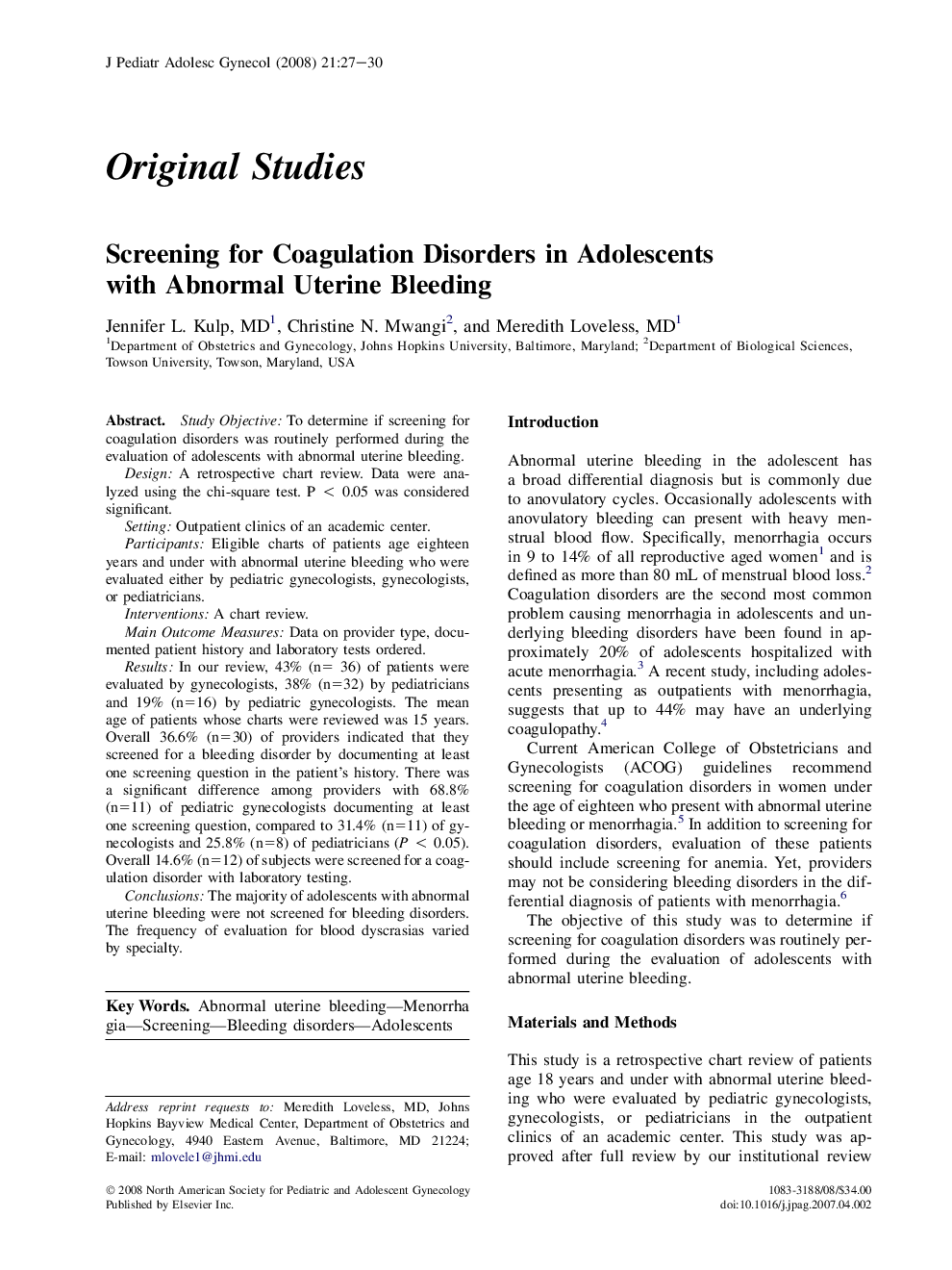| Article ID | Journal | Published Year | Pages | File Type |
|---|---|---|---|---|
| 3963301 | Journal of Pediatric and Adolescent Gynecology | 2008 | 4 Pages |
Study ObjectiveTo determine if screening for coagulation disorders was routinely performed during the evaluation of adolescents with abnormal uterine bleeding.DesignA retrospective chart review. Data were analyzed using the chi-square test. P < 0.05 was considered significant.SettingOutpatient clinics of an academic center.ParticipantsEligible charts of patients age eighteen years and under with abnormal uterine bleeding who were evaluated either by pediatric gynecologists, gynecologists, or pediatricians.InterventionsA chart review.Main Outcome MeasuresData on provider type, documented patient history and laboratory tests ordered.ResultsIn our review, 43% (n= 36) of patients were evaluated by gynecologists, 38% (n=32) by pediatricians and 19% (n=16) by pediatric gynecologists. The mean age of patients whose charts were reviewed was 15 years. Overall 36.6% (n=30) of providers indicated that they screened for a bleeding disorder by documenting at least one screening question in the patient's history. There was a significant difference among providers with 68.8% (n=11) of pediatric gynecologists documenting at least one screening question, compared to 31.4% (n=11) of gynecologists and 25.8% (n=8) of pediatricians (P < 0.05). Overall 14.6% (n=12) of subjects were screened for a coagulation disorder with laboratory testing.ConclusionsThe majority of adolescents with abnormal uterine bleeding were not screened for bleeding disorders. The frequency of evaluation for blood dyscrasias varied by specialty.
